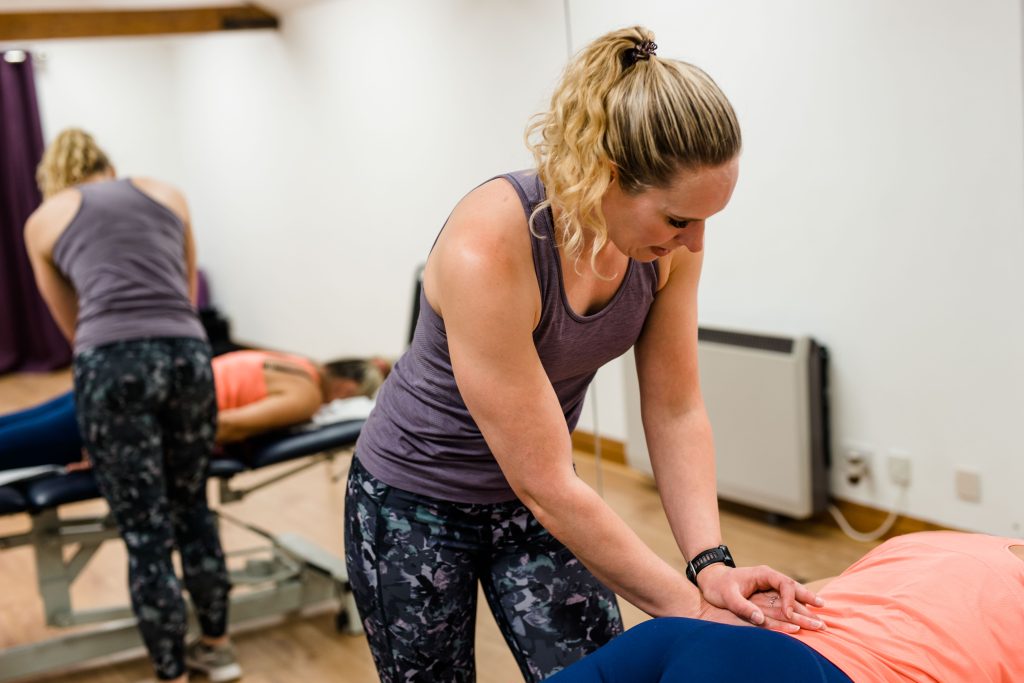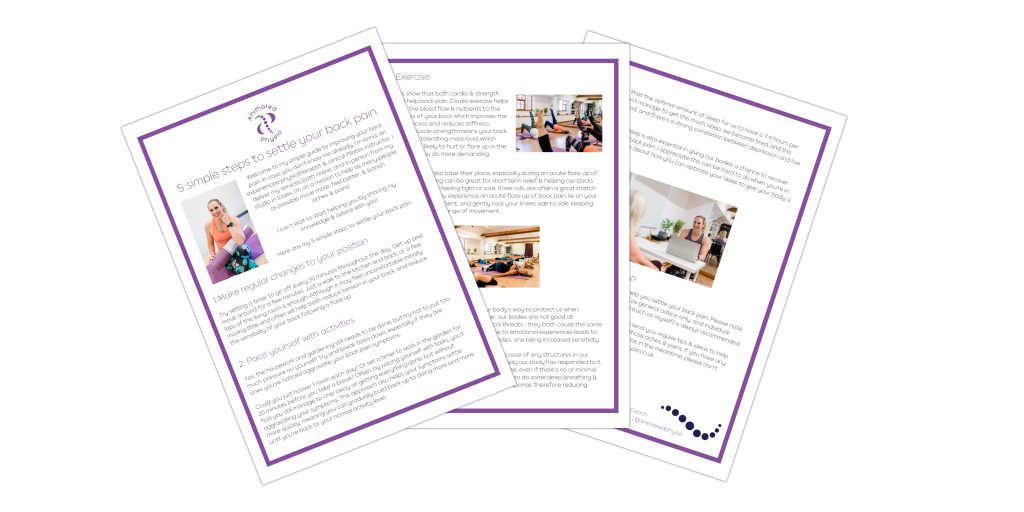When someone seeks my help with their back pain, it’s so common that they’ve tried loads, but despite this, their back pain isn’t going away! Could it be that, like my patients, you’re holding misconceptions around what you think will help your back? This could be holding you back from trying the things that will actually help your back pain.
Here are a few of the misconceptions I commonly hear:
Misconception #1: Rest is best for back pain
Whilst taking things a little easier during an acute flare up of back pain can help, by resting for a prolonged period of time, your back is likely to become both stiffer and weaker. And, you’ve guessed it, the stiffer & weaker your back becomes, the more likely it is to give you jip.
Instead, try making regular changes to your position. This helps keep your back mobile & helps reduce sensitivity.
Misconception #2: Massages cure back pain
Massages can help increase the blood flow to the soft tissues in your back, and reduce sensitivity, so it does have it’s place as a treatment. However, as it’s a passive treatment, i.e. you’re lying there (resting!) it doesn’t help your back become more mobile, stronger, more resilient, or more tolerant of demanding activities.
Instead, try exercising your back! Stretches can be helpful initially to help you restore range of movement. Cardio exercise is really good for increasing blood flow to the soft tissues of your back. And, strength training helps increase what your back can tolerate, making it less sensitive to more demanding activities.
Misconception #3: Painkillers are the only thing that will take the pain away
Whilst painkillers have their place in short-term management of back pain, especially when it first starts, it’s not something you want to be relying on long term. All medication has side effects, so why would you want to put medication into your body if there is a way to manage without it? (Please always consult your GP to find out if pain relief is appropriate for you).
Instead, try some relaxation techniques. These can be really helpful in reducing pain! Relaxation techniques calm our nervous system, helping our body experience a pain-relieving response.
Misconception #4: Avoid your day-to-day activities
If your back is hurting, you may think that avoiding your day-to-day activities is helping it. It’s also likely you’re worried about causing further damage to your back by doing the shopping, hoovering or washing up.
However, if you pace yourself with your day-to-day activities, it’s likely your back pain will settle much more quickly. By breaking tasks up and spreading them over the week, you’ll still get them done, meaning you’ll feel much less stressed. And stress is a big factor in persistent back pain (persistent: pain lasting over 3 months). If you can keep going with tasks that are normal for you, this will help to desensitise your back, meaning your symptoms are likely to settle much more quickly.
Misconception #5: Getting a scan, XRAY, or MRI scan will solve my back pain
This is a really common thought amongst so many of my patients. I really regularly hear from my clients that if they have a scan, they think this means they can get the right treatment to help, because they’ll be able to see what’s going on.
However, reports from scans are likely to cause alarm. Reports often use long words to describe changes that are normal age related changes within our back. Lots of research studies have been done on MRI scans of people with no back pain, and changes were still seen. This means we now think changes happen in structures of our back with age, like we get grey hair or wrinkles on the outside of our bodies, the insides change too. These studies show that the changes seen on scans are a normal part of ageing that cause no pain.
By waiting to have a scan, then waiting for results before you start trying other things to help your back will delay you taking action to help your back feel better as soon as possible!
How about, instead of taking time and energy going back and forth to your GP to try and get a scan, spend your time working out ways to improve your sleep hygiene. Getting 7-9 hours of sleep consistently each night can really help an episode of back pain to settle.
Would you like to know more about how to settle your back pain?
Did you know that by working on a combination of simple steps, you can start to take action to settle your back pain today? And that’s why I’ve created my free download, 5 Simple Steps to Settle Your Back Pain: to empower you to take control of your back pain & help you on the road to recovery: leaving you feeling stronger, more flexible & more confident. Click here to download my free guide today.


